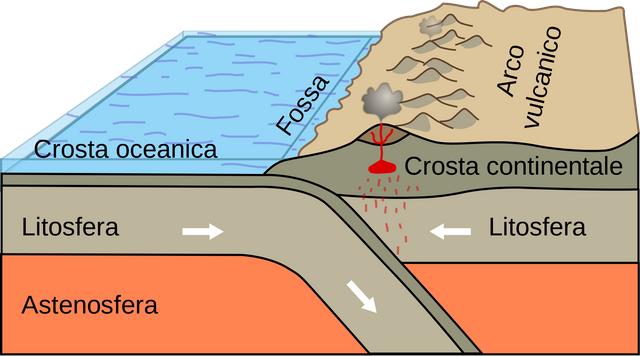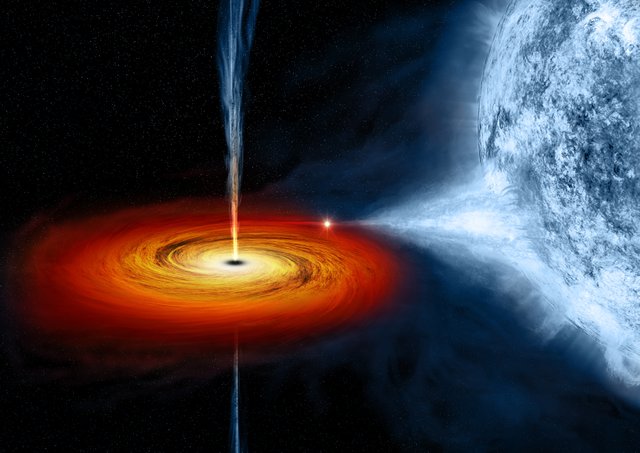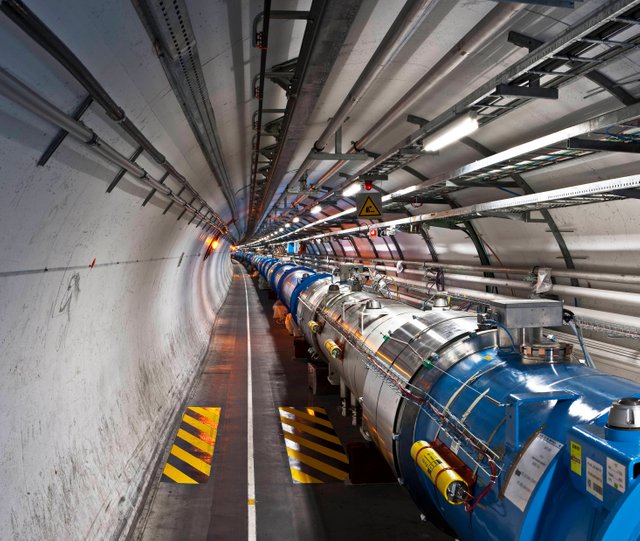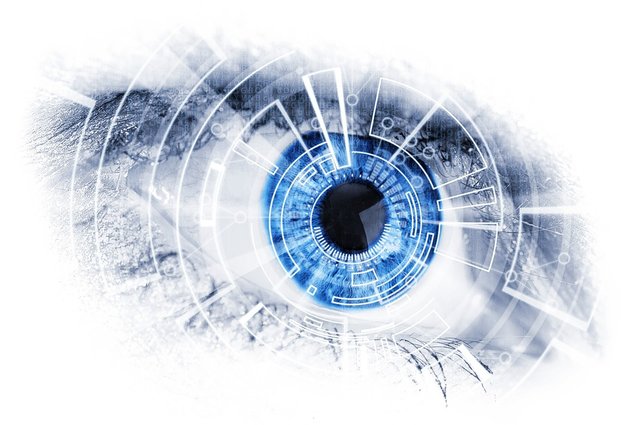Da Vinci Times #14.1
Life and plate tectonics
We are all aware that water is the most important element related to life but, thanks to some recent studies, other phenomena could take on important roles. Plate tectonics may have helped life to stay on Earth.

Imagine CC0 Creative Commons - Source
Scientists have always been fascinated by the plate tectonics and many of them agree to include this phenomenon among those that could define the nature of our planet. If on one hand the plate tectonics is known because it can generates earthquakes and volcanic eruptions, on the other one it is thought that many of these processes are fundamental for the maintenance of the stable conditions of our planet. Our unique atmosphere, the temperature not too hot, neither too cold, the oceans... They could all be influenced in some way by plate tectonics.
The black hole that eat a star
For the first time, the process of disintegration of a star by a supermassive black hole was directly observed. An event that initially was misunderstood and that took years of observation to be understood.

Imagine CC0 Creative Commons - Source
When that radiation was detected for the first time, the scientists thought to a supernova. However, subsequent analysis have shown that the source of emission has expanded over the years. The researchers realized then, that the radiation is emitted by the gases that a black hole has torn off from a star. These gases, orbiting around the black hole, heat up to temperatures of millions of degrees and a part of them is expelled in the space in the form of jets of matter. A known process, but this time it has been documented from the beginning and it has provided important elements to understand the physics of black holes.
Upgrade for LHC
The project to increase the performance of LHC, the world's largest particle accelerator, has started. It will allows to collect many more data and to better investigate the infinitely small.

Imagine CC0 Creative Commons - Source
If everything will proceed as planned, the upgrade will be terminated by 2026 and HiLumi LHC will be able to start data collection. HiLumi means "high brightness", a quantity that measures the number of collisions between particles in the unit of time. This means that more data will be collected, which will allow to better define the properties of the particles, such as the Higgs Boson. In order to carry out this update, modern high-tech components are needed, in particular magnets, which will be used to perfectly collimate the circulating proton beam.
Article source
Post of the day

Imagine CC0 Creative Commons - Source
A few days ago we introduced an article about the new Google AI; today @dysfunctional analyzes the topic of "social robots", which could really become part of our lives in the near future. How should we consider them? Precious allies or rivals?

Immagine CC0 Creative Commons, si ringrazia @mrazura per il logo ITASTEM.
CLICK HERE AND VOTE FOR DAVINCI.WITNESS
Keep in mind that for organizational reasons it’s necessary to use “steemstem” and “davinci-times” tags to be voted.
@viki.veg - @spaghettiscience - @rscalabrini
La vita e la tettonica a placche
Siamo tutti consci del fatto che l’acqua sia il più importante elemento legato alla vita ma, alla luce di alcuni recenti studi, altri fenomeni potrebbero assumere ruoli importanti. La tettonica a placche potrebbe aver aiutato la vita a mantenersi sulla Terra.

Imagine CC0 Creative Commons - Source
Gli studiosi sono da sempre affascinati dal fenomeno della tettonica a placche e in molti concordano nell’inserire questo fenomeno tra quelli che meglio definiscono il nostro pianeta. Se da una parte tutto questo genera timore a causa dei terremoti e delle eruzioni vulcaniche, dall’altra si pensa che molti di questi processi siano fondamentali per il mantenimento delle condizioni stabili del nostro pianeta. La nostra atmosfera unica, la temperatura non troppo calda ma nemmeno troppo fredda, gli stessi oceani… Potrebbero tutti essere in qualche modo influenzati dalla tettonica a placche.
Il buco nero che ha divorato una stella
Per la prima volta è stato osservato direttamente il processo di disgregazione di una stella ad opera di un buco nero supermassiccio. Un evento inizialmente frainteso, che ha richiesto anni prima di essere compreso al meglio.

Imagine CC0 Creative Commons - Source
Quando è stata rilevata per la prima volta quella radiazione si è pensato ad una supernova. Successive analisi però, hanno mostrato che la sorgente di emissione si espandeva nel corso degli anni. I ricercatori hanno quindi capito che la radiazione viene emessa dai gas che un buco nero ha strappato ad una stella. Questi gas, orbitando attorno al buco nero, si scaldano fino a temperature di milioni di gradi e una parte di essi viene espulsa nello spazio sotto forma di getti di materia. Un processo noto ma che questa volta è stato documentato sin dall’inizio e che ha fornito elementi importanti per capire la dinamica dei buchi neri.
Upgrade per LHC
Avviato il progetto per aumentare le prestazioni di LHC, l’acceleratore di particelle più grande del mondo. Permetterà di raccogliere molti più dati, e di indagare sempre meglio l’infinitamente piccolo.

Imagine CC0 Creative Commons - Source
Se tutto procederà come previsto, nel 2026 l’upgrade sarà terminato e HiLumi LHC potrà iniziare la presa dati. HiLumi significa “alta luminosità”, una grandezza che misura il numero di collisioni tra particelle nell’unità di tempo. Questo significa che verranno raccolti molti più dati che permetteranno di definire sempre meglio le proprietà delle particelle, come il Bosone di Higgs. Per effettuare questo aggiornamento saranno necessari moderni componenti ad altissima tecnologia, in particolare, dei magneti che serviranno a collimare con assoluta precisione il fascio di protoni circolante.
Article source
Post del giorno

Imagine CC0 Creative Commons - Source
Pochi giorni fa abbiamo presentato un articolo sulla nuova AI di Google; oggi @dysfunctional analizza il tema dei “social robots” che nel prossimo futuro potrebbero divenire parte integrante delle nostre vite. Come dovremmo considerarli? Dei preziosi alleati, oppure dei rivali?

Immagine CC0 Creative Commons, si ringrazia @mrazura per il logo ITASTEM.
CLICK HERE AND VOTE FOR DAVINCI.WITNESS
Si ricorda che per motivi organizzativi è necessario utilizzare le tag “steemstem” e “davinci-times” per essere votati.
@viki.veg - @spaghettiscience - @rscalabrini